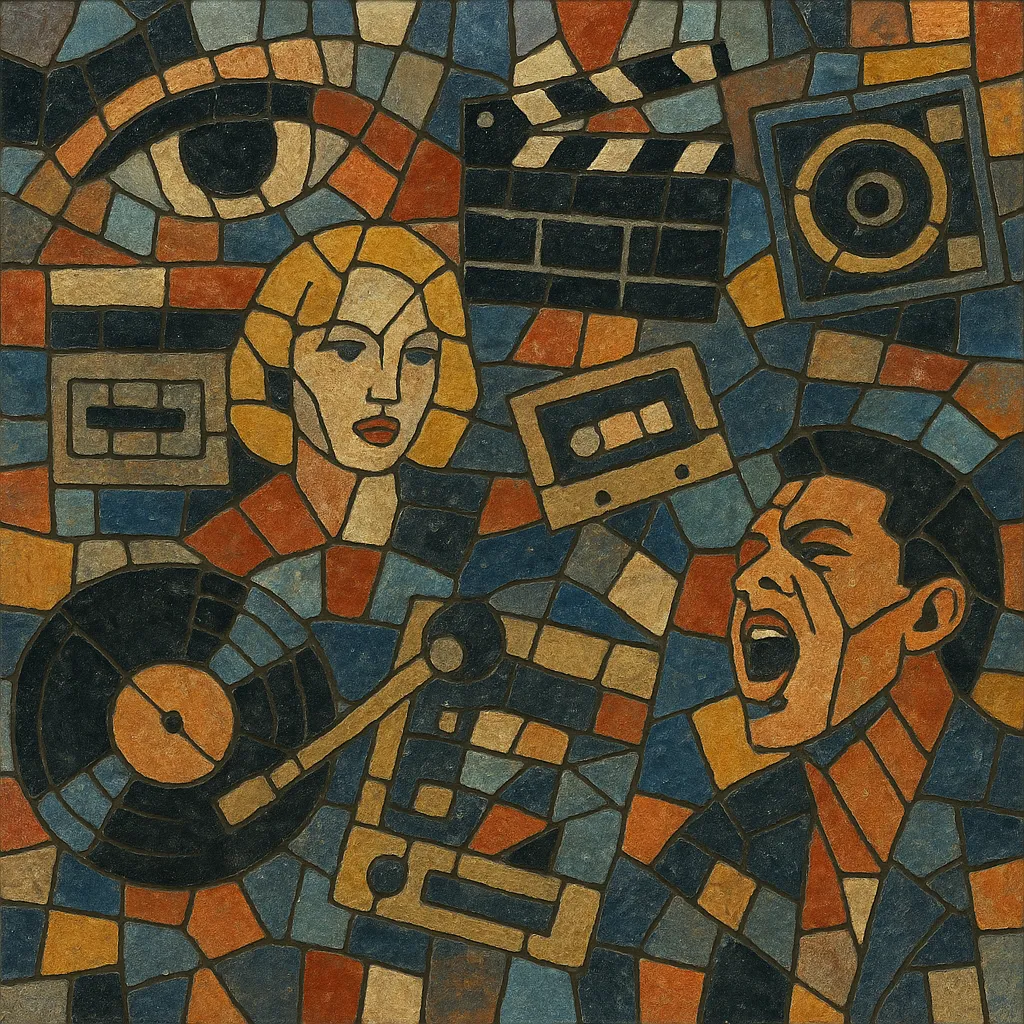Plunderphonics is a sample-based music practice in which new compositions are made entirely or predominantly from pre‑existing recordings. Rather than using short, unrecognizable snippets as texture, plunderphonic works foreground recognizable materials—pop hits, classical excerpts, commercials, voice-overs—and transform them through juxtaposition, layering, pitch-shifting, time-stretching, and collage.
Coined by Canadian composer John Oswald in the mid‑1980s, the term names both a technique and a critical stance that questions authorship, originality, and ownership in the age of reproducible media. Plunderphonics often functions as cultural commentary or satire, drawing attention to how meaning changes when familiar sounds are recontextualized. Stylistically, it ranges from dense cut‑up cacophony to groove-oriented rearrangements that remain danceable and accessible.
Plunderphonics builds on mid‑20th‑century tape practices: musique concrète and tape music pioneered cutting, splicing, looping, and varispeed. Sound collage by experimentalists and culture‑jamming “break‑in” novelty records of the 1950s showed how recognizable clips could tell satirical stories. By the late 1970s, hip hop DJs and early turntablists established sample‑based performance as dance culture, creating a crucial technical and aesthetic foundation.
Canadian composer John Oswald articulated the concept in his 1985 essay “Plunderphonics, or Audio Piracy as a Compositional Prerogative,” and demonstrated it with his 1988–89 Plunderphonics releases. These works used unmistakable commercial recordings, radically transformed to critique authorship and media power. Legal threats from major labels (notably surrounding the Michael Jackson track and artwork) resulted in the destruction of pressed CDs—an incident that cemented plunderphonics’ profile and its legal/ethical debates.
Artists such as Negativland, The Tape-beatles, People Like Us, The Evolution Control Committee, and Double Dee & Steinski expanded the practice, from political media collage to dance‑floor‑friendly edits. Lawsuits (e.g., Negativland’s U2 single) pushed fair‑use debates into the public eye. Affordable samplers and DAWs enabled denser editing and large‑scale sample palettes.
The Avalanches’ Since I Left You introduced a lush, pop‑leaning form of plunderphonic collage to a wide audience. The rise of netlabels (e.g., Illegal Art), peer‑to‑peer networks, and Creative Commons licensing catalyzed a wave of derivative styles, from mashup culture to vaporwave and hauntology. Contemporary practitioners work across performance (turntable sets, live sampling with MPCs/SP‑404s) and studio composition, balancing aesthetics with evolving copyright norms and platform policies.
Start with the premise that existing recordings are your instrument. Use recognizable sources and make their transformation audible. Aim for commentary—humorous, critical, or poetic—through juxtaposition and context rather than merely hiding samples as background.
Collect diverse audio: pop hooks, ad jingles, film dialogue, classical passages, news, field recordings. Keep detailed notes of sources and durations. Consider fair‑use principles (transformative purpose, small amounts, market impact) or clear samples where feasible. Creative Commons, public domain, and library/production music can reduce legal risk.
Use a DAW (Ableton Live, Reaper) or hardware samplers (MPC, SP‑404). Cut precisely, then transform: time‑stretch without formants, granular slicing, pitch‑shifting to new keys, filtering, gating, and spectral editing. Build composite grooves from drum breaks; layer micro‑loops to form new chords or textures. Employ sharp edits for surprise and long crossfades for dreamlike continuity.
Two common strategies: (1) Groove‑centric—lock samples to a steady tempo and quantize for danceability; (2) Montage‑centric—allow tempo and meter to shift for a cinematic flow. For harmony, repitch clips to a target key, or embrace bitonal clashes for tension. Side‑chain compression and EQ carving help interlock dense layers.
Structure pieces as narratives: cold open with an iconic phrase, escalate with rhythmic layers, pivot via an unexpected quotation, and resolve by reframing the opening sample. Use recurring motifs to create coherence. Contrast high‑fidelity pop fragments with lo‑fi media for timbral drama.
For live sets, prepare stem banks and cue points. Combine controllerism with turntablism—needle drops, backspins, and live looping. Visuals (credit rolls, source images) can clarify your commentary. Always balance spectacle with clarity so quotations remain intelligible.


